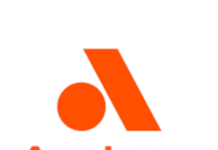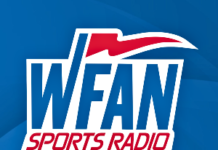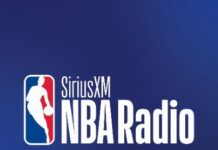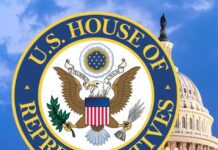
(By Mike McVay) The November 2021 print issue of Radio Ink carried an article that I authored whereby I interviewed some leading content strategists, radio programmers, managers, owners, consultants and audio insight experts. The article featured some great insights as to what radio can do to compete with the digital giants (DSP’s) and what benefits over-the-air radio can take advantage of to overcome this new level of disruption. This column continues that discussion with those experts and shares additional insights and new comments from our participants.
The ever-present inferiority complex that radio suffers from allows the companies who have digital delivery to play on the perception that they’re dominant. There is a true superiority over radio that the DSP’s have in regard to quality, a better listening environment and a value proposition that paying for a monthly subscription is less expensive than paying for downloading individual songs. Given Video subscriptions, subscribing to a DSP is not the leap that it once was, and Car Play makes it convenient.
What DSP’s lack, more than anything else, is distribution at the level of over the air (OTA) radio. That will change with time, unless radio focuses on the expansion of OTA to Digital with cross-platform promotion, and unless radio makes a true and real concerted effort to improve the listening environment and level of content for the audience.
Many of the offerings that the DSP’s present are mostly music driven. That is to say music without personalities. One can make the comparison that those channels are today’s version of a record department in a big box store. Maybe a better comparison is having an iPod on shuffle. Thus, the assertion that music-heavy DSPs compete with music downloads more so than radio.
There are DSP channels that offer personalities. Those are more closely compared to OTA Radio and are more competitive. Subscribing to the commercial free stream provides a significantly better listening experience. Fortunately for OTA Radio there are fewer personality enhanced stations on DSPs, as of today, and their national platforms make it difficult to connect to a local market. That will most assuredly change with time. Including the customization of content for a market.
Lee Abrams, credited with the creation of Album Oriented Rock and what became the modern era Rock Radio, is also known as a futurist. Abrams followed his variation of rock with a hard rock format known as Z-Rock, Disney Radio and was the Chief Programming Officer when XM Radio was born. His list of accomplishments is long … and not yet finished.
Abrams notes that “at the end of the day, devices are not as important as their output. Brilliant programming will prevail wherever its located. Sadly, the brilliant programming of today isn’t necessarily on FM. One day, the “Apple” type companies of the world may figure out the radio experience for this century and take streaming services to a new level, which could happen while FM has its’ eye off of programming.”
One of the things that I always harp on, to those who are critical of the business, is to offer a solution and not leave us hanging on the words of criticism. Abrams came through suggesting that radio “focus on what listeners experience. The sound of a station. The excitement, the newness, being a part of now rather than an audio relic of the past.” Abrams challenges the C-level of the business by declaring that OTA Radio is running on creative fumes and completely out of sync with, as he calls it, “this new Wild West.” There needs to be an investment in content development to create something new.
Jacobs Media Strategies President, Fred Jacobs, noted that “while radio has the best distribution platform (a one-button solution, no buffering, no data fees), makes the mission to meet the audience where they are.” Jacobs agrees that “broadcasters must continue to promote their terrestrial locations, but given the diminishing number of “regular radios” in home and workplaces, (and even some cars), accessibility on smartphones, laptops/desktops, smart speakers, as well as on in-car platforms like Apple CarPlay and Android Auto … is an imperative.” Jacobs Media Strategies is known for their work on in-auto entertainment, and keeping radio on the center stack in a vehicle, which is imperative.
Ken Benson, Co-Founder and Partner at P1 Media Group, has a pragmatic approach to how radio can compete with the digital giants. He said that the audience “may come for the music, but they stay for the hosts.” iHeartMedia CEO Bob Pittman believes radio’s niche is companionship. Benson adds “Radio must focus less on the music and more on what it does between the songs. Listen to 102.3 Now Radio in Edmonton, Canada. It’s been the market leading station in ratings and revenue since its inception over a decade ago. Yes, they play music, yet it is the personalities … in all dayparts … that attract Now Radio’s massive audience. The streaming giants can deliver more music, more variety, and fewer commercials than any radio station. Radio can deliver a contextualized, in the moment, one to one experience with human beings better than anyone. Invest in your talent.”
Futuri CEO Daniel Anstandig weighed-in saying that “The biggest thing radio can do to better compete with DSPs is to give audiences more opportunity to control the content and the experience with the brand.” Erin Callaghan, also from Futuri, supported that by adding that “we can also be less mysterious about the music. I don’t turn on the TV and hope my favorite show is going to be on soon. I tune in for certain shows at certain times. Telling the audience exactly when their favorite song is going to play, inviting them to participate in choosing the music they want to hear, providing a platform to create lists and favorites – this puts radio on stronger footing versus subscription services.”
National Account Manager for Futuri, Jim Roberts, chimed-in with encouragement for broadcasters to “Create a truly omni-channel experience for your audience.” He asked “Does Facebook only exist on their social media app? No. Facebook has podcasts, YouTube videos, even a Twitter account.” Your audience is everywhere, and your content also needs to be everywhere. We need to tell the audience where they can find us and how to listen to us.
If you really want to know what it’s like competing with digital, then you have to get into the trenches with Market Managers and Programmers. The Program Director 95.5 KLOS/Los Angeles, Keith Cunningham says “It starts with hiring dynamic talent that will stand-out and transcend the appeal of a typical song or format. Talent truly is radio’s secret sauce … more sauce, please.”
Cunningham’s approach, to have high profile personalities in all dayparts, is not new. It is showing results and I expect that we’ll see more stations utilize high-profile talent in at least the high-profile dayparts. Keith suggests that “Radio can utilize the trust listeners have with the medium to help reinvent and evolve its strong relationship with advertisers, and move to integration being the lead for the main frame, as well as create real podcast strategies and side-channel subscription opportunities for listeners and clients.”
Commonwealth Broadcasting partner and Bowling Green Market Manager, Dale Thornhill acknowledges that radio has been “admittedly slow to focus on Audio more than Radio. We are trying to capture and package unique content as part of podcasts or social posts. It’s a slow process.”
Lee Tobin, SVP of Sarkes Tarzian, and President & General Manager for their Fort Wayne cluster, feels that radio needs to be “more interactive in real time.” He asks “How long does it take for your station to reply to a listener?” Tobin adds “Having personalities to build that bond, not just reading liners and playing music, is important. Personalities enhance the listening experience and can relate locally to a community. DSPs cannot.”
Brad Holtz, WTTS & WGCL/Indianapolis President/General Manager shared his belief that there are things that radio can do better to improve the listening experience for the audience. “What are those things? Maintain a respectful spot load. An eleven-minute break with 20 units is simply not fair to a listener OR to the advertiser who’s stuck in the middle of the pod. Focus on relevance. While many corporate clusters are focused on transactional and programmatic buying, this oftentimes leads to messages that are completely misaligned. So much listening is done online, yet for many stations the online listening experience is an afterthought. Hence, dead air, an endless stream of the same PSAs, from stations that cover spots online. There is a great opportunity to create attention-getting content that could not only keep listeners through a break, but strengthen brand identity.” My interpretation of his suggestion is “never miss a chance to entertain or inform.” Respect the listener.
Bob Lawrence: VP/Market Manager for New South Communications in Jackson, MS noted that “it’s sad that a larger percentage of our terrestrial product is not being utilized through smart speakers. We need to cut through whatever barriers keep those numbers from being much higher. This is an education issue, not just for listeners but for the industry as a whole.” I support what Bob said. When we first hear of the Amazon Echo and Google Home, and before we knew them as Smart Speakers, I was excited. Smart Speakers put radio back into the home and the workplace.
Lawrence noted “We all need to keep in mind that we now communicate with more than just a microphone and a transmitter. We must focus on building heightened listener experiences, especially while they are streaming on our websites. Radio needs to create compelling content on our sites that include games and contests; only available online, or special offers they can find online, or locally driven blogs, and material from our on-air personalities. Just telling listeners to listen on your website is no longer enticing enough. Creating synergies with advertisers that do more than just advertise. We cannot use the same strategies we have used for terrestrial radio. Digital Advertising and Digital Streaming Experiences must be unique.”
“Make sure you’re always relating to your audience. There is no room for throw-away breaks. Content matters and so does being authentic.” Kathy Eagle of Futuri added. She suggests showing “your personality but make sure you have your finger on the pulse of what matters most to your listeners.” Futuri has used technology to make it more efficient for stations to be on multiple platforms. Teams aren’t growing. realizes that and makes it possible to do more with less. Futuri also invests in research to ensure stations put technology to use in the right areas and in the right ways.
Ken Benson added this closing thought in regard to how we can survive, or at worst co-exist, with content digitally delivered from DSP competitors … “Innovation is critically important. I was delighted to see Audacy launch a new format tailored for New York City, as 94.7 the Block. Win or lose, this new Classic Hip Hop format creates interest and excitement for radio. Our industry’s “risk aversion” and “over commercialization” is killing the golden goose. It’s about to be 2022, and many of the programming strategies and tactics from the past aren’t working as well today. One thing that hasn’t changed is consumers will flock to great content … whether Ted Lasso, Yellowstone, or the Squid Games. Give them great content!”
Mike McVay is President of McVay Media and can be reached at [email protected]







Mike…great thoughts here.
Remember back in the Magic days of the late ‘70’s, early 80’s? In Detroit with Greater Media at the time, we had an 8 unit commercial load. We can start there. I’ve been out of the business 7 years now, and pay attention to others habits. These long breaks are killers. Somehow, we need to bust out of that habit. Second, become a barker for the stream on Smart Speakers. I just threw out the last table radio I had when it broke. Can’t even find one easily to replace it, so it’s now a charging stand for my phone next to the bed. Most importantly though, is taming the hype, outdated imaging and noise. Replace it with genuine humans who touch those listeners with worthwhile stories and information. The quantity of music needn’t change, but we need to open it up and let good people go with it. How to do that? Preview, then follow through with info on an artist or song that isn’t well known. Find ways to touch and engage. I share the previous posters concern about where to find people. Talk radio has brought folks from other, related places. I find myself intrigued with some of the shows on SiriusXM hosted by artists or music aficionados. We are still largely married to “Format” radio, and I don’t believe we’re able to connect with radio users anymore that way.
Hi Mike – I’d be happy to be interviewed by you. But that post was not written or sent by me. I absolutely deny having anything to do with it. Best, Bob Savage, The WYSL Stations. [email protected]
Where are all these personalities coming from that you talk about? Radio has no pipe line any longer and retirement happens every day for those who started their careers in the 70’s and 80’s. Many of the big companies own anything that’s worth anything in small markets now. Radio has also created “music only” listeners. People who punch the button any time the music stops and a commercial plays, they go looking for more music. And radio’s other big issue is commercial breaks that are longer than your songs. Some are 7 minutes. Call that last sponsor in the break and ask them if they’re happy with that. Of course they’re not. But you’re doing it to play longer music sets. Finally, if you stop the music and your talk doesn’t keep the listener with you, that’s on you as the air personality. It’s your your most important job and you’ve failed.
Great column Mike! … I think that a key point throughout most of the professionals’ comments in your column, is about CONTENT. (CONTENT has always been King, as I’m sure you know.) Listeners are attracted to COMPELLING CONTENT.
Compelling content is great musical artists, talented radio personalities who BRIEFLY have something meaningful or funny to say that the listener enjoys, strong listener promotions, interesting-to-the-listener talk radio, sports play-by-play, and more.
Listeners will seek out and stay with compelling content, regardless whether it is on an FM platform or a streaming platform.
My solution to conventional radio’s challenges?… First, by and large the music industry needs to dramatically step up its game. 90% of the new music for at least the last 15 years absolutely sucks, and is garbage.
Secondly, as an industry, nothing personal but radio needs to get away from being “led” by just old white people (of which I am one, lol). Bob Pittman for example is 67 years old. A person that old is entrenched in their beliefs and thinking, which is a major impediment to being open to trying new strategies and ideas.
For example, the old guard now is perfectly ok running 10, 12, 15, or more commercials in a row. That is TOXIC content- literally driving listener away and shafting the advertisers buried in the middle of the break. And iHearts (and other companies) love affair with voice tracking because it is “cheap”, and hiring $15 announcers who are anything but compelling– gives the listener yet another reason to not stick around. … These type of FM stations – incredulously – actually think that they only need the music to keep the listeners. They couldn’t be more wrong. The music is ubiquitous now, available on dozens of platforms.
Moving forward, the industry needs to pressure the recording industry for better music, and stations need to hire Program Directors in their early 30’s for new, conventional thinking that relates to the 25-54’s. And these local Program Directors need complete autonomy, and not reporting to some old white guy or woman in corporate.
Plus, STOP having your jocks “verbally vomiting” meaningless diatribe, especially going into a stopset!! There should be ZERO talk going into a stopset, and the break should be 2 or 3 units max… then right back to the music!
Plus spend some money on promotions and give away prizes that are hard-to-get or hard-to-find. … Giving away $1,000 on a “multi-market promotions” is a con job. And listeners are not that stupid. Giving away $25 gift cards is a joke too.
Those are my thoughts Mike. Of course, under the stranglehold that corporate owners have on most major market stations, these changes right now are probably only realistic for small and medium market stations, that are not buried in corporate debt-servicing and top-down management.
Happy Holidays!
Great job Mike : )
Hi Bob:
I would love to interview you. Please shoot me your contact information and I will respond. Looking forward to speaking.
-M
Why is it always Radio VS something? That’s a really out-dated way to look at something. Radio AND…. that’s how future-thinkers are incorporating their upcoming strategies…
Mike, nice job, as always, herding us cats, and penning a meaty article. Thanks for including me.